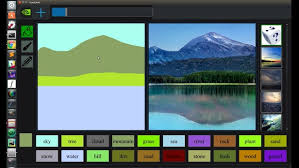
Breaking News
 They've Been Feeding You Poison (And Calling It Food)
They've Been Feeding You Poison (And Calling It Food)
 Tattoo ink may cause prolonged changes to the immune system
Tattoo ink may cause prolonged changes to the immune system
 Travel gadget promises to dry and iron your clothes – totally hands-free
Travel gadget promises to dry and iron your clothes – totally hands-free
 Duckweed: A sustainable, protein-packed food source smeared by Big Ag
Duckweed: A sustainable, protein-packed food source smeared by Big Ag
Top Tech News
 Perfect Aircrete, Kitchen Ingredients.
Perfect Aircrete, Kitchen Ingredients.
 Futuristic pixel-raising display lets you feel what's onscreen
Futuristic pixel-raising display lets you feel what's onscreen
 Cutting-Edge Facility Generates Pure Water and Hydrogen Fuel from Seawater for Mere Pennies
Cutting-Edge Facility Generates Pure Water and Hydrogen Fuel from Seawater for Mere Pennies
 This tiny dev board is packed with features for ambitious makers
This tiny dev board is packed with features for ambitious makers
 Scientists Discover Gel to Regrow Tooth Enamel
Scientists Discover Gel to Regrow Tooth Enamel
 Vitamin C and Dandelion Root Killing Cancer Cells -- as Former CDC Director Calls for COVID-19...
Vitamin C and Dandelion Root Killing Cancer Cells -- as Former CDC Director Calls for COVID-19...
 Galactic Brain: US firm plans space-based data centers, power grid to challenge China
Galactic Brain: US firm plans space-based data centers, power grid to challenge China
 A microbial cleanup for glyphosate just earned a patent. Here's why that matters
A microbial cleanup for glyphosate just earned a patent. Here's why that matters
 Japan Breaks Internet Speed Record with 5 Million Times Faster Data Transfer
Japan Breaks Internet Speed Record with 5 Million Times Faster Data Transfer
nVidia's latest AI technology can instantly transform your doodles into...

Back in the early yo dawg/me gusta era of internet memes, around 2010, some larrikin made an image ridiculing how-to-draw books. "How to draw an owl," it read. "First, draw some circles. Next, draw the rest of the [expletive] owl." It beautifully skewered the giant leaps some of these how-to books would take between steps, and much mirth was spread.
Well, it seems we can stop laughing, because nVidia has just built an app that lets you draw a few lines and circles, and will then consult its knowledge of a million-odd real images to draw the rest of the [expletive] scenery. And yes, it really does look that simple. Check out the video.
The app is named GauGAN, a nod to French post-impressionist painter Paul Gauguin as well as to the GAN, or Generative Adversarial Network processing that it uses to learn about and mimic scenes.
It's worth understanding a bit about GANs. nVidia founder and CEO Jensen Huang believes they're a massive step forward in deep learning and artificial intelligence, because they remove a huge bottleneck from the AI training process – human interaction. If you're trying to train an AI to recognize owls, for example, you need to feed it a huge number of images, and have a human tell it where the owls are. That's incredibly time consuming, as you'd imagine.

 Advanced Propulsion Resources Part 1 of 2
Advanced Propulsion Resources Part 1 of 2

